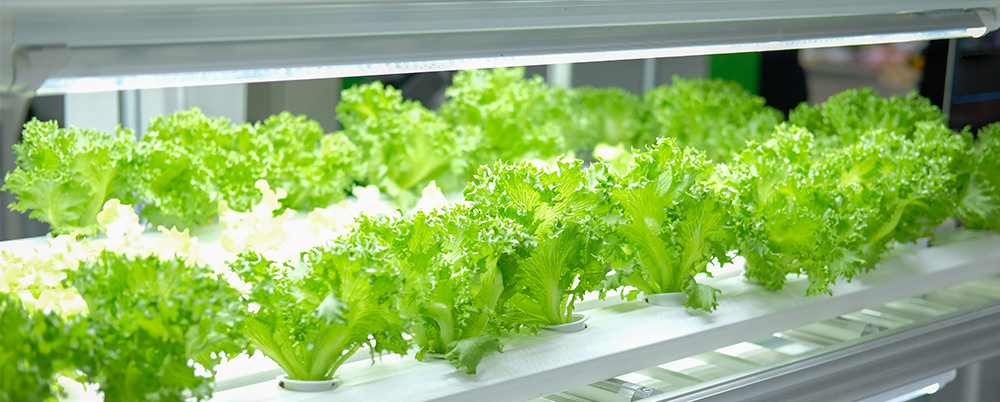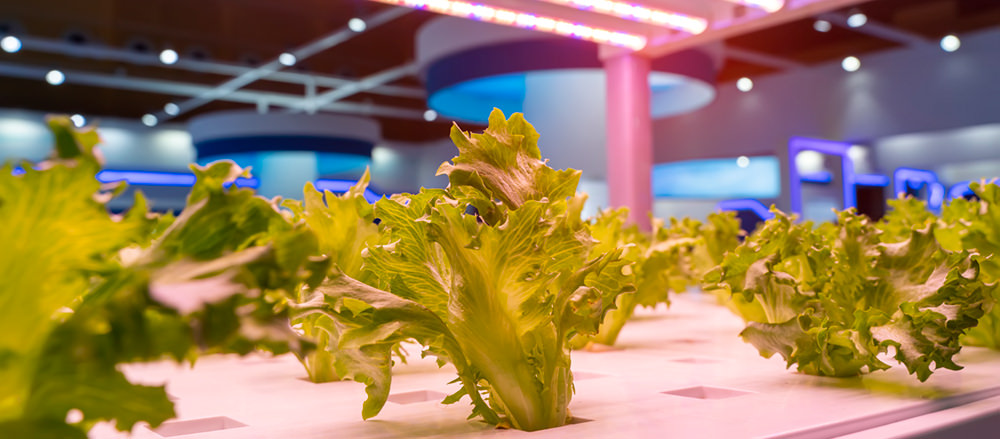Overcoming Light Quality Challenges in Lettuce Production
Lettuce is one of the most popular and nutritious leafy vegetables in the world. It is rich in vitamins, minerals, antioxidants, and dietary fiber. However, lettuce is also a plant that requires very specific light conditions to achieve optimal growth, quality, and yield. Growing lettuce in indoor environments, such as vertical farms or plant factories, poses some challenges.
One of the main challenges is optimizing the light quality for lettuce growth and quality. Light quality refers to the spectral composition, intensity, duration, and distribution of light. Different light qualities can have different effects on lettuce morphology, physiology, and biochemistry. In this article, we will explore how light quality affects lettuce production and how to overcome the challenges of light quality using LED-based lighting solutions. By understanding both the problems and the possibilities, lettuce growers can take control of lighting conditions to maximize yields, quality, and ultimately profits.
Light quality and its effects on lettuce
Light quality plays a pivotal role in the growth, development, and overall quality of lettuce crops. Lettuce relies on the right balance of light spectrum, intensity, and duration to flourish.
One of the key aspects of light quality is the light spectrum, which refers to the range of wavelengths emitted by the light source. Different wavelengths of light can also affect the photosynthesis, pigmentation, and nutrition of lettuce. For example:
- Red and blue light are the most effective wavelengths for photosynthesis and biomass production in lettuce.
- Blue light also enhances the synthesis of beta-carotene, a precursor of vitamin A, and the antioxidant activity in lettuce leaves.
- Green light improves nitrate reduction and amino acid accumulation in lettuce leaves.
- Purple light increases the vitamin C content and inhibits nitrate accumulation in lettuce leaves.

Light intensity, another vital component of light quality, refers to the brightness or luminous power of the light source. Lettuce requires an optimal light intensity for photosynthesis, which directly affects its growth and yield. Inadequate light intensity can lead to elongated, spindly plants with reduced leaf production. On the other hand, excessive light intensity can cause heat stress, damage the plant’s photosynthetic apparatus, and inhibit growth. Finding the right balance is essential for ensuring healthy and productive lettuce crops.
The duration of light exposure, known as the photoperiod, is also a critical factor in lettuce production. Different growth stages of lettuce have specific light duration requirements. For instance, during the vegetative stage, lettuce benefits from a longer period of light exposure, typically 16 to 18 hours per day. In contrast, the flowering stage requires shorter photoperiods to stimulate flower development. Maintaining a consistent and appropriate light duration throughout the growth cycle is vital to achieving optimal results.
Common light quality challenges in lettuce production
Inappropriate light quality is one of the most common causes of underperforming lettuce crops. Here are some of the top light-related issues growers face:
insufficient light intensity
Insufficient intensity is one of the most frequent problems. Lettuce requires high light levels up to 14 mol/m²d for healthy growth. Levels below 5 mol/m²d cause stretching and disorderly habits. Light can be restricted by factors like greenhouse glazing, shading, distance from fixtures, and more. Monitoring intensity at crop level is essential.
Inadequate light spectrum
Lettuce requires a balanced light spectrum for optimal growth. If the light spectrum lacks certain wavelengths, it can negatively impact photosynthesis and nutrient absorption. Imbalanced blue to red spectrum ratios also commonly occur. Too little blue light yields pale lettuce with few leaves. Too much blue keeps plants compact but reduces yield. Finding the right ratio takes trial and error, but it boosts uniformity and productivity.
Excess green light is another issue in indoor environments. Lettuce filters out green wavelengths through its leaves via a process called state transition. But scattered green light can still penetrate down to the lower leaves and trigger shade avoidance responses.
Uneven light distribution
Uneven distribution of light can cause variations in plant growth and development within the cultivation area. Areas receiving insufficient light may experience slower growth, while areas with excessive light may be prone to stress or nutrient imbalances. Achieving uniform light distribution across the entire lettuce crop is essential for consistent and healthy plant growth.
Irregular light duration
Day length issues are common when transitioning between seasons or geographies. Lettuce varieties have specific day length requirements. Dramatic light period changes can induce early bolting, flowering, and bitterness. Light scheduling and supplemental lighting help prevent disruptions. Maintaining a consistent and appropriate light duration is crucial to ensuring proper flowering and achieving desired harvest schedules.

Solutions for overcoming lighting challenges
LED fixtures tuned to lettuce’s spectrum needs provide customizable, adjustable lighting. By using LED grow lights, lettuce growers can optimize the light quality for their crops according to their specific needs and goals. For example:
To achieve optimal growth rates and desired plant shapes, lettuce growers can harness the benefits of LED lighting. By balancing the trade-off between photosynthesis and photomorphogenesis, a combination of red and blue LEDs with varying ratios can be employed. Red light facilitates photosynthesis and biomass production, while blue light stimulates photomorphogenesis and adaptive processes. Additionally, incorporating green, purple, or far-red LEDs alongside the base light source further enhances lettuce quality and nutritional value.
Lettuce growers seeking to reduce nitrate accumulation and enhance nutritional quality can introduce supplementary green, purple, or far-red LEDs to the existing light setup, which may comprise white light or a combination of red and blue LEDs. Green light activates the enzyme nitrate reductase, promoting nitrate reduction. Purple light inhibits nitrate uptake and accumulation by suppressing genes associated with nitrate transport. Far-red light boosts nitrogen assimilation, ultimately increasing the amino acid content.
To minimize energy consumption and environmental footprint in lettuce production, growers can opt for white LEDs or broad-spectrum LEDs supplemented with blue and red LEDs. Unlike red + blue LEDs, white LEDs, or broad-spectrum LEDs, offer a visually pleasing environment for crop inspection by accurately rendering object colors. Moreover, these lighting options create a more natural light environment for plants, potentially improving their stress tolerance and resilience.
By applying these solutions, lettuce producers can overcome lighting challenges and enhance their crop’s productivity and quality. It is essential to choose the right lighting system, optimize the light spectrum, ensure sufficient light intensity, achieve uniform lighting distribution, and establish consistent light duration. By harnessing the power of advanced horticulture lighting technologies, growers can unlock the full potential of their lettuce production and thrive in the competitive market.
If you require assistance with advanced LED horticulture lighting solutions, please do not hesitate to reach out to us. Our dedicated team is readily available to provide the support you need.

